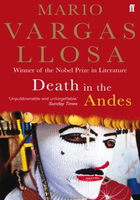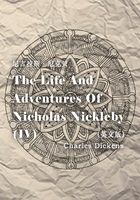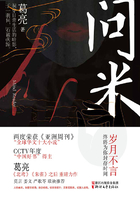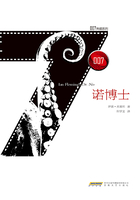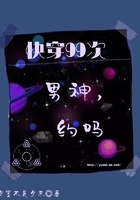CHASING A LEGEND IN TAOS
ONCE UPON A TIME in a Taos, New Mexico, grocery store, a woman named Luisa Gelenter was going about her business buying food. Somewhere in the produce section, she felt a person standing too close. Inching away, she kept shopping, only to feel this person creep up on her again. Annoyed, she stomped off to another aisle. When the lurker soon reappeared, Luisa turned and snapped, "What do you want?" The words were barely out of her mouth when she recognized it was Julia Roberts. The movie star and avid knitter happened to be a big fan of Luisa's work and was too shy to introduce herself.
Who knows how it really played out, but that's the story Luisa loved to tell.
In the world of yarn, Luisa Gelenter was a legend. Using nothing more than water and select minerals, bugs, skins, branches, roots, leaves, petals, and powders, from knowledge she picked up in Bolivia in the early 1970s, she could transform natural fibers, such as humdrum wool and mohair, into vibrant, magical yarns for knitting, weaving, and other creative pursuits. Some of her yarns were ultimately spun by a machine at a mill, but in the beginning, all of her fiber was farmed out to a squad of loyal handspinners who produced luminous, lively, color-laden skeins that were truly one of a kind. A complete garment in these yarns cost a fortune and was worthy of any red carpet.
In 1974, Luisa had opened a shop called La Lana Wools, which occupied the old Bert Phillips studio in the center of Taos. As Phillips had helped establish Taos as a hub for artists, so did Luisa for lovers of natural dye. While tapestry weavers flocked to Taos to learn from the legendary Rachel Brown, from the late 1970s until the early part of this century, La Lana was a mecca for anyone interested in natural dyes or fibers colored with them.
Luisa's yarns were outliers at a time when other yarn stores were selling the spun equivalent of Hamburger Helper. Most were made from small batches of naturally dyed fibers that had been blended and spun by hand, aided by a discerning human eye, into unrepeatable skeins. They were priced by the ounce, like gold. Because of the incredible amount of time and skill each one required—and the appropriately high price tag for such work—she owned this market and had no competitors.
I'd come to town for the Taos Wool Festival when I first set eyes on La Lana. October in New Mexico is chile time, and the air was filled with that distinct fragrance of chiles being roasted outdoors. The leaves were beginning to turn in the Sangre de Cristo Mountains, but in town, pink hollyhocks and Russian sage still lingered, striking a lovely contrast against the warm adobe walls.
The festival took place at Kit Carson Park in the center of town. There, a carefully juried group of vendors was assembled in a broad circle, like a wagon train at the end of the day. In the middle, a fiddler and guitarist played tunes while people danced on the grass. The setting was magical.
La Lana wasn't a vendor that year, I suspect for the simple reason that the shop was adjacent to the park. So I dutifully left and crossed the street, walking through a small courtyard and into La Lana.
The minute I entered the store, I was greeted by an army of finished garments. It was like the wardrobe trailer on an exotic film set, with wildly textured vests and tunics that looked like a cross between native tapestries and ceremonial garb. The clothes would overwhelm a shy person. These pieces required grandeur. Rumor was Julia owned at least one.
Beyond the garments, the room opened up into a space I can only describe as a yarn cathedral. It still had the original massive wall of north-facing windows from when it was Phillips's studio. But instead of illuminating paint on canvas, the windows now showcased Luisa's masterpiece on the next wall: a writhing waterfall of handspun skein upon skein of explosive color and texture unlike anything I'd ever seen. Brilliant mohair locks shimmered against matte wool fibers that seemed to be still in the process of twisting together. It was so stunning, so rare and spectacular, that you could only stop and gasp. It was the kind of place that made you talk in a whisper.
I was tongue-tied. All I could do was furtively snap a few pictures, buy some skeins, and sneak out. After I wrote about that visit in Knitter's Review, I heard from Luisa and we began a cautious, respectful correspondence.
When I next went to Taos a few years later, it was specifically to see Luisa. I was writing The Knitter's Book of Yarn and needed to know more about the mechanics of yarn. Luisa happened to have a mill at her disposal. In 1991, she'd launched the Taos Valley Wool Mill with two partners. One of the partners was a man named Robert Donnelly, an industry veteran Luisa touted as her guru in all things yarn. "He can tell you everything," Luisa said. I needed to know everything, so when a family wedding was announced in New Mexico, I emailed Luisa and we made a date.
I arrived with family in tow, depositing them at our hotel before walking over to La Lana for what I thought would be a short visit. This time, I went up to the woman behind the register, introduced myself, and asked to see Luisa. To calm my butterflies, I pretended to study a basket of dyestuff.
A booming voice came from behind. Everyone seemed to step aside—if not physically, then energetically—to make room for the short, stocky, weather-beaten woman who'd just come in.
I took a deep breath, smiled, and held out my hand. But Luisa didn't take it. "No," she shook her head. "You're not Clara. You're too young."
I didn't know her well enough to tell if she was serious or not, but she looked angry. All my confidence drained, and I suddenly felt like a kid, a poseur. She was probably in her sixties, such a legend that she had assistants and protégées to do grunt work. She'd mistaken me for someone on her level when, in fact, I was just starting out.
We recovered with small talk, and she showed me around the shop. Remembering why I'd come, she asked, "Shall we go see Robert?" The mill was outside of town. We would need to drive there, she explained. Did I have a car? I stuttered that mine was parked at the hotel across from the … "Oh forget it," she shook her head, "I'll drive."
This was not the start I'd had in mind.
We got into an ancient Volvo, me carefully moving things off the passenger seat. The car was filthy. Not Hoarders filthy but the kind of chaotic filth you'd imagine in Jackson Pollock's car. Amid the empty plastic tubs and scratched cassette tapes was a sort of barnyard debris from her foraging expeditions. I imagined her screeching to a halt by the side of the road, grabbing the bucket, diving into a thicket, and emerging triumphantly with the very twigs necessary to obtain a rich orange or copper or red. What looked like desert brush to us was, in fact, her paint box.
We drove slowly out of town, making our way farther and farther until there was nothing but desert. Just as I began to wonder if I should've brought an overnight bag, we reached Arroyo Hondo and turned off the road.
Amid the single-wide trailers, barbed-wire fences, abandoned cars, and barking dogs was a small, nondescript building. Its doors were open, and an immense noise was coming from within. This was the mill.
The minute we went inside, I was hit by the overwhelming smell of lanolin mixed with spinning oil. The space itself was quite small, about the size of my local garage, just big enough for key pieces of equipment. I remember spotting the bobbins before anything else. Bins of empty ones, bins of full ones, bobbins tucked on shelves and tossed in cardboard boxes.
A man with a beautiful black ponytail was dropping tidy clumps of fiber onto a conveyor belt that led into the drum carder, a huge machine with whirring cylinders. I gasped as a frothy river of fiber poured from the other side of the machine right onto the concrete floor. A sudden urge came over me to lie on that floor and let the fibers spill over me—but I resisted.
The spinning frame stood idle, its long row of bobbins empty and expectant. Nearby, I saw slinky strips of white fiber being pulled into a noisy green contraption, spewing out the other end like soft-serve ice cream into a tall cylindrical bucket.
Something wasn't working right. An older man in a gray T-shirt flipped a switch, lifted the lid, and pulled away some fiber. Another man, this one with a gray beard and a Miller Racing baseball cap, stood with him and consulted on that little clump of fiber, both of them pointing, nodding, rubbing it between their fingertips, shaking their heads. They must've agreed on something, because the baseball-cap man nudged the fiber back into the machine, closed the lid, and flipped the switch back on. Spotting us, he smiled and came over. This was Robert.
He gave me a cursory tour of the mill. I'd seen the carding machine, which, Luisa explained, was at the heart of her experiments with millspun dyed yarn. The more they could control the fibers as they went in, the more unique the results they could get on the other end when it came time to spin. I didn't quite understand at the time, but I nodded eagerly.
Another spinning frame was in motion, strands of fiber worming their way from tall barrels to bars suspended over the machine, then through a series of rollers until spun yarn wound its way onto bobbins. Nearby, yarn snaked its way upward from cones, over another bar, through more loops, and was then paired with another strand before getting twisted together onto a bigger bobbin as plied yarn.
Robert yelled an explanation over the noise, but to be honest, the sights and sounds and smells were so overwhelming that I barely heard what he was saying. I just knew I was in love with this place.
At last, we ducked through a back door and sat down on white plastic lawn chairs in the dirt. Luisa and Robert sat with their backs to the wall, facing the afternoon sky. I could see large pebbles where the adobe walls had begun to wash away.
Luisa smoked. I held my breath until the breeze changed, then quickly filled my lungs with clean air before the smoke blew back again. I watched the cigarette as it got smaller and smaller, until, whew, she stubbed it out. She probably had asked if I minded her smoking, but after our bumpy start, I was certainly not going to tell Luisa Gelenter not to light up.
We sat there talking about yarn—about the current state of the knitting world, about the state of domestic textiles, about the fate of larger mills across the country. Robert had worked at many of them and witnessed their demise firsthand. Now, he operated a fraction of what he was used to, serving a very different audience. Instead of running ten hours a day to satisfy the voracious appetites of T-shirt or towel manufacturers, he was spinning small batches of wool for handweavers, knitters, and hobby farmers, people who cared about the breed integrity of their flock and knew each animal by name. Farms in the region tended to have Navajo-Churro sheep, or alpacas and llamas, even angora goats, animals who generally grew long, strong fiber. Robert set this up as a semi-worsted spinning mill with equipment that had been carefully chosen and calibrated to process these fibers. He also made yarns for Luisa.
When I brought up my passion for breed-specific wool yarn, Robert shook his head. He'd approached several breed associations over the years to try and get them to pool their fibers and spin special yarns from them. But back then, in 2006, nobody was interested yet. It turns out Robert was a man ahead of his time.
Whenever the conversation lagged, Luisa would pull out yet another cigarette. Robert, whose yellowed mustache suggested a lifetime of smoking, preferred to nibble on sunflower seeds, spitting the shells into his hand and dropping them on the ground. Every few minutes he'd pop another one in his mouth, and the two of them would launch into another story—mostly about people I didn't know but they assumed I did. My interview skills were still abysmal, and I was so intent on impressing them, on proving I wasn't that upstart kid Luisa had thought I was, that I didn't dare reveal the depths of my ignorance.
On the subject of making yarn, however, Robert gave answers that have guided me well all these years. He cautioned me about the importance of starting with good fiber. "You can't make good yarn out of bad fiber," he explained, before adding, "but you can make bad yarn out of good fiber." Holding the keys to the good and the bad? The people operating your mill equipment. "Oh," he added, "and always get your carding waste back. They'll just try to sell it to someone else."
Eventually, the sun slipped below the horizon and the neighborhood dogs started howling. My family would be worried about me; it was time to go. We said our farewells, leaving a heap of butts by Luisa's chair, a mound of sunflower-seed shells by Robert's, pages of words scribbled in my notebook.
My yarn book came out a year and a half later, and the Maine Morning Mitts pattern—designed using Luisa's yarn and offered as a free download—became a runaway success. For me, they were a fitting tribute to the beauty of Luisa's colors, like knitted jewels for the hands. I know she was pleased and proud, but also a wee bit annoyed that the pattern called for just one skein.
Luisa and I would email back and forth occasionally. When she friended me on Facebook, I knew I'd passed the test. She would comment on my posts, usually something like asking about a rug in the background of a photo I'd taken. When she forwarded me emails with subject headers like, "Fwd: Fwd: HOW A DOG HUGS A BABY … ABSOLUTELY PRICELESS," I'd finally become a friend.
As the years passed, the knitting world changed. Carefully nurtured relationships with magazine editors were no longer enough to stay on top, nor was having Julia Roberts as a customer. Ravelry arrived and, around that same time, the rise in so-called indie designers. Instead of being told what yarn to use by a publisher with advertisers to please, these designers got to pick whatever they wanted—often the least expensive yarns they could find or the ones offered to them free. That wasn't Luisa's way. She was a shrewd businesswoman, and giving away yarn to unproven strangers didn't seem to be in her nature.
Along with the indie designers came indie dyers, filling the market with fresh new machine-washable wools in electric, acid-dyed colors we would affectionately refer to later as "clown barf." Nuanced natural hues had no place under that circus big top. La Lana remained a pilgrimage stop for traveling knitters, but over time they left with fewer and fewer skeins in their bags.
They say the hardest thing for a musician is to play quietly, and the same is even more true for hand-dyers. While she'd built her reputation upon vividly nuanced skeins, by now Luisa was experimenting with the most intriguing and extraordinary yarns of her career—which also ended up being the least known.
Eternally curious and with a mill at her disposal, Luisa had been exploring the notion of using minimal color to define an otherwise white space. Whereas before she relied on handspinners to blend the colors, now she was doing it right at the mill, layering dyed fiber by hand, in varying intensity, atop undyed fiber as it entered the carding machine. She'd hinted at it in my visit, when we'd been looking at the carding machine. Once I had a skein of the yarn in my hands, I understood.
You see, the carding machine is to textiles what sifting is to flour, that essential first step in producing clump-free cohesion. It is built to blend. But Luisa and Robert were figuring out when and how to add color in such a way that it would remain distinct all the way through carding, pin-drafting (that green machine that was giving Robert trouble), and the final spin. It's the most complex and demanding thing you can try, something you can only do if you control the mill equipment yourself—or have a really good working relationship with the person who does. You're hacking a machine whose entire purpose is to mix, tricking it into barely doing its job. On a large scale, Eisaku Noro in Japan is the only other person who's ever managed to do this successfully.
The results were astounding in their silence. Skeins of white puffy singles, upon closer examination, revealed traces of color that were distinguishable down to their individual fibers. As you knit, the color would gain intensity, then fade away again. It looked effortless, and perhaps that was the problem. By then, the expectation was that La Lana would remain a museum for beautifully colored handspun yarns. Here, you had barely any color at all, and it was masterful. But it wasn't enough.
In February 2012, news came that La Lana was closing. It was the end of an era. "Faithful customers who could be counted on to drop a couple hundred dollars in wool and supplies have all but disappeared," Luisa told the Taos News. "Plus, I'm getting old. We all are."
A whole new batch of natural dyers had cropped up. Some had taken classes with Luisa, others knew her only vaguely by name. Whereas Luisa had learned her trade in South America, these newcomers had found their passion in places like India and Japan. They had blogs and Ravelry fan pages and Etsy shops.
But for La Lana to close, for Luisa to take down her shingle from lack of business, it was as if Georgia O'Keeffe had gone out for groceries and returned to find that all of the other artists and galleries had abandoned New Mexico, leaving her with nothing but a stack of canvases, some back issues of Knitter's Magazine, and a hefty rent payment coming due.
After the announcement, Luisa was inundated with messages and orders for remaining inventory. "We are so sad about our closing," she wrote me. "Well I am sad about it too …" She explained that she'd still offer her dyeing services for private clients, and I made a mental note to ask her about collaborating with me on my Great White Bale project. I promised to spread the word about her closing sale and I wished her the best of luck.
Later that July, she sent me a quick email about a yarn I'd just mentioned in Knitter's Review. Apparently someone aquí en Taos (although born and raised in New York City, Luisa often veered into Spanish when she wrote) was planning on opening a yarn store in Taos with the same name as the yarn. "Will this be a problem for her?"
I was annoyed at being asked something I had no authority to answer, so I never replied.
On December 8, 2012, I learned that Luisa had died.
Melanie Falick, who'd spent time with Luisa while writing Knitting in America, later told me Luisa had been diagnosed with cancer. She left behind a son, Aaron, who works as a plumber in Santa Fe.
Upstairs in my barn studio, right next to my first-edition copy of The Principles of Knitting and dog-eared Barbara G. Walker books, is my shrine to Luisa. It contains several skeins of her yarn that I've never had the courage to knit. Every time I try to think of a suitable project, Luisa's voice interrupts me. "Oh God, not the mitts again." She shakes her head. "You want to blend me with Cascade 220? Are you loco?!"
In death, Luisa Gelenter has become one of those larger-than-life people about whom you tell stories to the young folk around that proverbial campfire. They nod, doing their best to imagine, to try and understand. But they will never quite grasp how exciting and awe-inspiring Luisa's work was. She was the real deal, the kind of person who could leave even a glamorous Hollywood superstar momentarily speechless.

